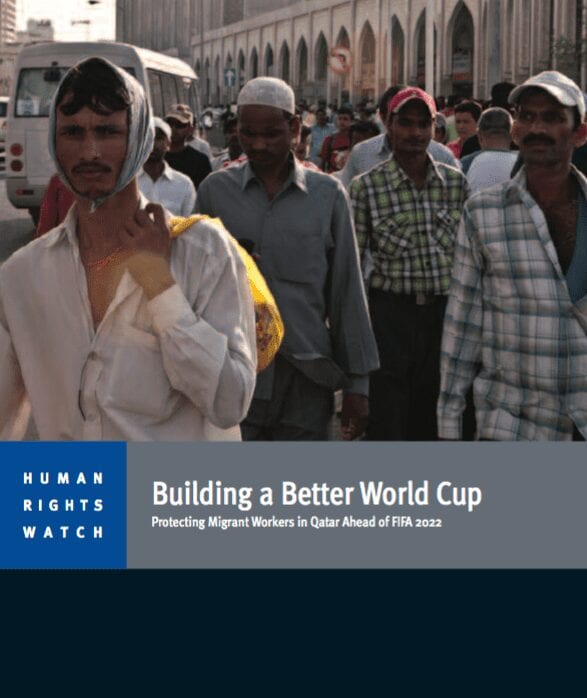
Building a World Cup: Protecting Migrant Workers in Qatar Ahead of FIFA 2022
EXCERPT FROM PUBLICATION:
“In December 2010, the small Gulf state of Qatar won its bid to host the 2022 World Cup—a first for an Arab country. Over the next decade the country will undertake massive new construction to support the quadrennial world championship soccer games: its winning bid included commitments to build nine state-of-the-art stadiums equipped with cooling technology to beat temperatures that reach an average high of 40 degrees Celsius (104 degrees Fahrenheit) during the summer months, a new airport complete with a sail-shaped terminal, public transport infrastructure, $20 billion worth of new roads, a bridge to neighboring Bahrain (the longest in the world), 54 team camps, and sleek new hotels for spectators. As of mid- 2012, a limited number of World Cup-related projects were under construction and new tenders began to be issued for contracts tied to construction of venues for the 2022 games. Underpinning this push is a vast army of migrant workers, who comprise a staggering 94 percent of Qatar’s workforce—1.2 million of its1.7 million residents—the highest percentage of migrants to citizens in the world. Qatar’s World Cup selection means that worker recruitment will reach new heights: media have reported that over a million additional workers may be needed to carry out World Cup-related construction. Yet the deeply problematic working conditions of migrant workers throughout the country mean that realizing Qatar’s World Cup vision may depend on their abuse and exploitation unless adequate measures are taken to address the human rights problems widespread in the construction industry in Qatar. This report documents pervasive employer exploitation and abuse of workers in Qatar’s construction industry, made possible by an inadequate legal and regulatory framework that grants employers extensive control over workers and prohibits migrant workers from exercising their rights to free association and collective bargaining. It also addresses the government’s failure to enforce those laws that at least on paper are designed to protect worker rights. It examines why violations of workers’ rights go largely undetected, and looks at the barriers that workers face in reporting complaints or seeking redress.”
